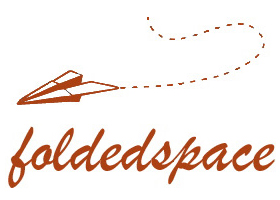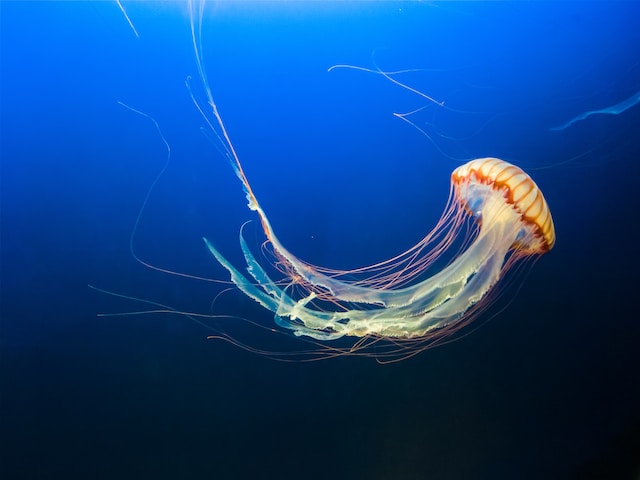Well, after years of talking about making art, I’ve finally made some art. Yesterday, I finished the homework for my watercolor class. I painted a jellyfish.
This project was fun because I got to put into practice various methods I’ve learned about during the past two weeks. Mostly, though, I tried to turn off my brain and just see the jellyfish, you know?
Our instructor recommended we use this photo from Unsplash as our reference, which I did:
Yesterday morning, I spent about thirty minutes making a small study as a sort of proof of concept. (I guess that’s probably what a study is intended to be. I’ve never thought about it before.)
![this study was postcard sized, about 10cm x 15cm [my small jellyfish study]](https://jdroth.com/wp-content/uploads/wc0001-study.jpg)
I didn’t like my colors here, and I didn’t like how I messed up the background wash by fussing with it too much. So, I made some changes for my full-sized piece. The biggest change I made, though, was that I just went for it. I didn’t overthink anything. Once I started painting, I kept on painting until I had to pause to wait for the paint to dry. So much better to do things this way!
My end result isn’t perfect (in that it doesn’t completely match my vision), but I do like the outcome.
![this full painting is about 31cm x 23cm [my full painting of a jellyfish]](https://jdroth.com/wp-content/uploads/wc0001-jellyfish.jpg)
I think it’s funny that you can see certain problems in both the study and the final painting. I really wanted to add some black (or Payne’s grey) to darken the edges of the jellyfish, for example, because the reference photo has some dark spots. But every time I tried to add darker pigment, I just messed things up. Oops. They’re less messed up in the final version, though.
I’m not really complaining. For a first painting, I like this fine. I’m especially pleased with the adjustments I made to the color palette from the study to the final product. I didn’t like my colors in the small version, so thought a lot about how to mix things up. This painting is the result of eight hours of class time, maybe another eight hours of YouTube videos, and eight more hours of messing around with paint on my own. In other words, this the result of my first full 24 hours of watercolor exploration.
I didn’t intend for watercolor to be the gateway medium to my foray into art. I didn’t choose watercolor; watercolor chose me. But I have to say: It’s a hell of a lot of fun. It’s allowing me to exercise a part of my self that hasn’t been exercised since grade school. I look forward to starting my second project later today. My next assignment is to paint a still life of three eggs. It’s much more difficult than it sounds…


Looks fantastic, man!! If I just saw this posted somewhere I’d think it was done by a professional without question. So cool to see your passion flowing like this, and even more so that you’re DOING THE THING!
I’ve been doing a lot of art since the pandemic. My teacher encourages us to do 10 ‘studies’. You can really learn a lot when you know this isn’t going to be a ‘finished product’, but just one of many where you are trying different things. I highly recommend this process.
I like the idea of doing ten studies. I’ll probably do that for my next assignment, painting three eggs. The one thing holding me back is that watercolor paper is expensive! Still, I’ll bet it’s cheaper in the long run to do ten studies of painting a single egg and learning the techniques behind it than it is to not do those studies and produce worse paintings on larger sheets of paper.
I’m off right now to an art store an hour north of here. I’ll see if they have bulk, loose sheets of watercolor paper. I’m also going to pick up some gouache, etc. Eager to do some more painting this evening…
Goodness JD! This is just wonderful! Not just the finished product but the journey from the inspo to the study to the final painting. I could read a whole narrative about how that happened. So happy for you that you are exploring this AND sharing.
Wow JD! I can really see the progression. I like how you turned your brain off and just went for it. Does the background get painted afterward or as you paint the jellyfish? I think the teacher chose a difficult first subject – I mean, how do you paint translucent tentacles…